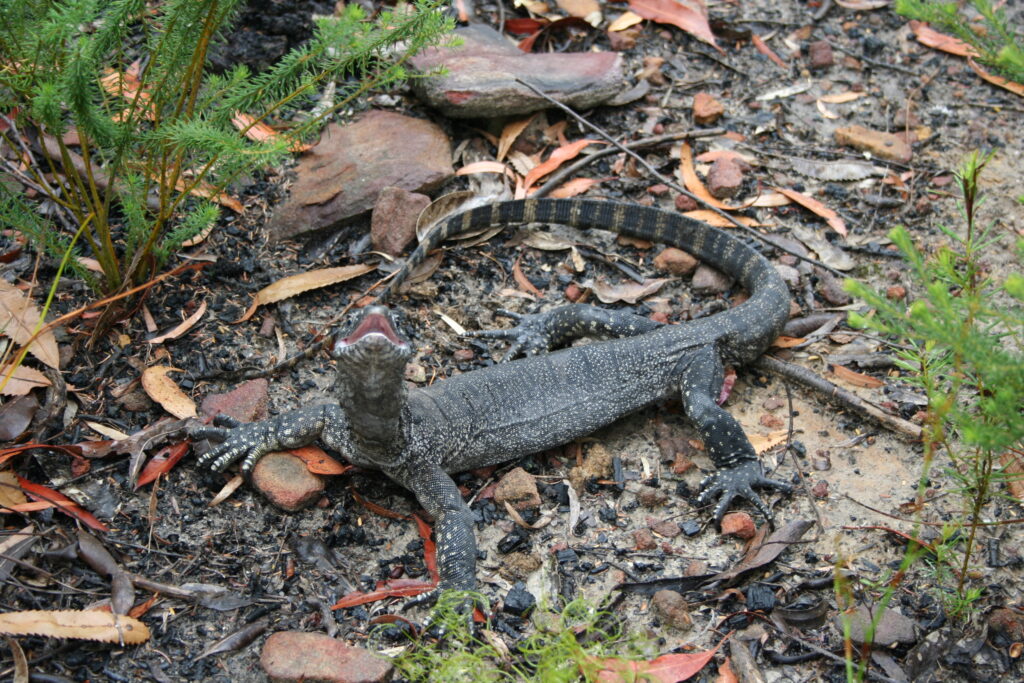The NSW Government must stop native forest logging, fix its offsetting scheme and permanently
protect 22 wildlife corridors between Barrington Tops and the Hawkesbury River to act on extinction this century.

By Jacquelene Pearson*
“The loss of biological diversity has come to be regarded as both the world’s, and Australia’s, most pressing environmental issue,” is the opening phrase of the first report from the Barrington to Hawkesbury Climate Corridors Alliance, published in December of 2022.
It’s been said many a time, in many a place and turn of phrase but the five founding organisations of this new alliance are saying it now, about this place and we invite you to listen in at this crucial time.
The latest Commonwealth Government’s State of the Environment Report hit us like a brick, highlighting the fact that we in Australia have lost more mammal species in the last two centuries than any other continent in the world and that 19 ecosystems are now showing signs of, or are at, near collapse.
It is now seven years since the NSW Government wound back land clearing and species protection laws to give landholders more power to clear native vegetation.
The natural environment of our region is already under intense pressure – over 7,000 ha of the region’s native bushland have been earmarked for “greenfield” urban development and, between 2008 to 2017, about 6,500 ha of bushland were lost, almost a third due to logging in the southern Mid-coast Local Government Area.
The Hunter Community Environment Centre, Central Coast Community Environment Network, EcoNetwork Port Stephens, Hunter Bird Observer Club and National Parks Association Hunter Branch formed the Barrington to Hawkesbury Climate Corridors Alliance in mid-2022 and publicly launched five key recommendations it believes will tackle the loss of biological diversity, and address the damages caused by clearing of native vegetation and threatened species habitat for agriculture, forestry, mining, infrastructure and urban development.
Add the already-evident impacts of global warming to this ongoing key threatening process, and up to 45 percent of threatened fauna species in NSW and 72 percent of the state’s threatened flora species will not survive this century, unless areas of habitat, or ‘climate refugia’, are legally protected.
To evade this fate for nearly half of NSW threatened animal species and almost three-quarters of plant-life, the alliance urgently recommends that no less than five Coastal Climate Corridors, twelve Dry Climate Corridors and five Moist Climate Corridors, all identified by the NSW Government back in 2007, be protected from further bushland degradation, loss and rehabilitated.
Lead author of the alliance report Paul Winn told the Newcastle Herald in December , “Our research suggests at least 22 threatened native fauna species will suffer substantial range contractions in the region and at least six species are at risk of extinction within the next 50 years.”
The six species Winn refers to include local populations of the Red-legged Pademelon, Yellow-bellied Glider, Stephens Banded Snake, Wallum Sedge Frog, Giant Barred Frog and the Red-crowned Toadlet – all of which would have little-to-no habitat left in the region by 2070 under a worst-case scenario.
“By 2070, we estimate existing National Parks and State Forests will support climate refugia for many of the threatened fauna species predicted to decline but, to allow for populations to move as climate patterns shift, these climate refugia must be protected from further degradation and functionally connected with large, protected landscape-scale corridors,” Winn said.
Recommendations:
- An immediate moratorium on further land clearing within the Climate Corridors identified by the project.
- Inclusion of a specific strategy in the 2041 regional plans for the Central Coast and Hunter supported by detailed zoning and development guidelines in the Local Environmental Plans (LEPs) and Development Control Plans (DCPs) along with investment programs overseen by Local Land Services.
- Radical changes to the NSW Biodiversity Offset Scheme with adequate stewardship payments to encourage landowners to protect, manage and rehabilitate native vegetation within climate corridors.
- That the government has a targeted voluntary land acquisition program so it can acquire large core areas of high-quality habitat and essential corridors for restoration. This would focus on moist forests in the southern Mid-coast and moist and dry landscapes across the Hunter River Valley through the Cessnock, Singleton and Dungog Local Government Areas.
- State Forests to be transferred to the National Park estate as reserves or regional parks or other appropriate categories to be managed by local communities.
The Barrington to Hawkesbury Climate Corridors report, like most literature on the topic, makes damning and confronting reading, however it does offer a well-researched and considered solution to rising species loss for one very ecologically important part of the continent.
The Barrington to Hawkesbury (BtH) region is of international conservation significance encompassing the Myall Lakes and Hunter Estuary, listed under the Ramsar Convention on Wetlands, and connects the Greater Blue Mountains World Heritage Area in the south to the Barrington Tops World Heritage Area in the north.
The region is home to nine NSW Endangered Populations, 106 threatened terrestrial fauna species and 116 threatened terrestrial flora species and connects two World Heritage Areas spanning almost 11,300 km2. The region takes in eight LGA’s and straddles two bioregions, eight bio sub-regions and connects the coast and inland via the Hunter River Valley representing an overlap between the tropical and temporal zones where the current geographic limits of many species are found.
In our view, it would be the perfect place for NSW politicians of all persuasions to demonstrate a commitment to protecting nature by championing the five recommendations in the report.
The Point will be keeping a close eye on how existing parliamentarians and candidates respond.
Meanwhile if you’d like to engage with this campaign, you can sign up to get involved https://www.hcec.org.au/climate-corridors
The Alliance will hold a strategic planning session this month. You can express interest in attending here https://docs.google.com/forms/d/e/1FAIpQLSforu8uZqleTdNQY6D8R8ubAeP1a_2h_M_uU6tn6-PdIWw31Q/viewform
*Jacquelene Pearson is the Central Coast Community Environment Network’s representative on the Barrington to Hawkesbury Climate Corridor Alliance


